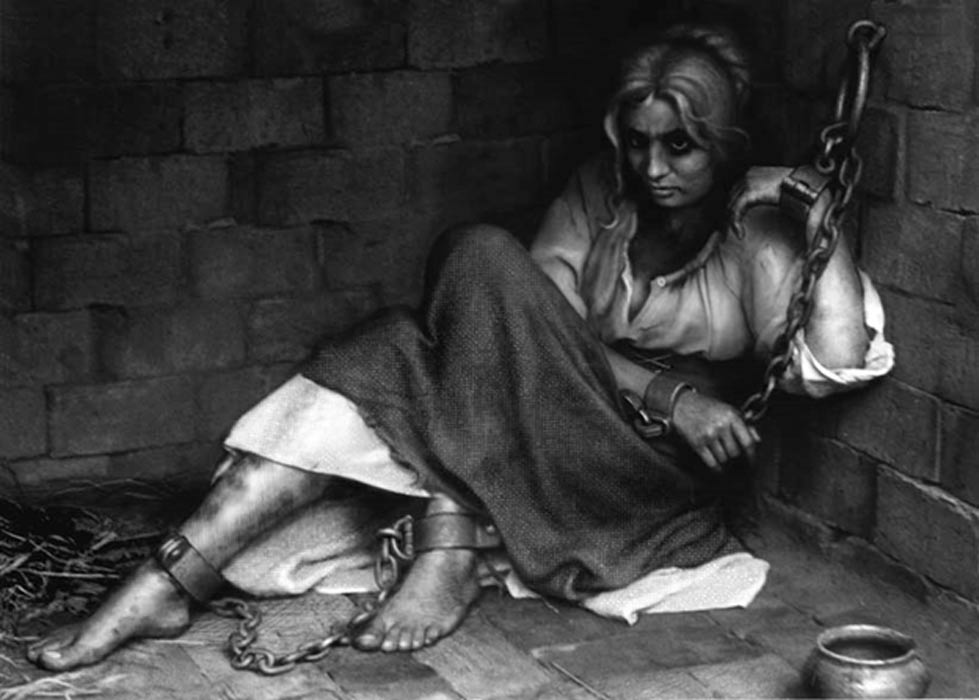Archaeologists Identify Scottish Church Where Accused 16th Century Witches Were Imprisoned
Researchers think they have found architectural features in a church in Aberdeen, Scotland, where accused witches were held during the Great Witch Hunt of 1596-‘97 and later strangled as an act of ‘mercy’ and burned at the stake.
One of the features is a ring attached to a stone pillar in St. Mary’s Chapel of the Kirk (Church) of St. Nicholas. The pillar is in one of two features where the accused were imprisoned: the chapel of St. Mary’s and the steeple of the kirk, says Live Science in an article about the find.

The former Kirk (Church) of St. Nicholas in Aberdeen was site of much sad history during the Great Witch Hunt of 1596-1597. (Wikimedia Commons photo/AberdeenBill)
OpenSpace Trust of the United Kingdom is restoring St. Mary’s Chapel during redevelopment of St. Nicholas and the East Kirk sanctuary as a community center called the Mither (Mother) Kirk Project. The project leader is Arthur Winfield, who told Live Science that the accused witches probably were cold while they were imprisoned because the trials were conducted during winter, when it gets to 3 degrees centigrade (37.4 F) in the chapel.
St. Nicholas underwent archaeological excavations in 2006 and 2007 to prepare for the redevelopment. Remains of witches were not found because they would have been buried on ground that was not hallowed (holy). However, archaeologists did disinter 2,000 bodies, including 1,000 complete skeletons, of people buried under church buildings on the site from the 11 th to the 16 th centuries.
Those bodies will be reinterred in a vault under the main floor of the church later this year.
The Aberdeen City Council has an article at its website titled Witches and Withcraft in Aberdeen.

Witches, a 1508 painting by Hans Baldung (Wikimedia Commons)
It says that witches and healers were a part of society for centuries, but in the later part of the 16 th century, people came to believe that accused witches received power from the devil. In Scotland, about 80 percent of witchcraft cases involved women. They were usually poor, elderly women “whose poverty, sour temper or singular habits made them an object of dislike or fear to their neighbours.”
Such a woman might or might not have a reputation for healing, as well as harming, but above all else she was deemed to have malevolent supernatural powers. Some of the most common misfortunes for which witchcraft was deemed responsible were sudden illness, certain accidents, lingering illness for which no cause was clear, strokes, unexpected deaths, failure of crops (especially if others were doing well), strange behaviour in animals and disasters at sea.
In Aberdeen in 1596 and 1597, 45 women and 2 men were charged and tried for alleged witchcraft. Twenty-three women and one man were executed. Another wave of witch purges followed in the 1640s in Scotland. Witchcraft was originally an ecclesiastical (church) crime, but in 1563 the Queen’s Act made it a crime sanctioned by the state.
Witches in Aberdeen were tried by a provost, four baillies and a jury. Dittays, or lists of charges, covered many years of accusations, most of which concerned casting of spells.

An 1868 drawing of St. Mary’s Chapel, where accused witches were imprisoned in the 16 th century as they awaited trial. Credit: Open Space Trust/Mither Kirk Project
The dittays don’t survive in city archives except for the one brought against Isobel Strathanchyn. In February 1597, she faced the following charge in her dittay:
Secondly you are indicted for coming to Elspet Mutray in Woodhead woods and asking
her to lend you a penny, which when she had given you, you took the
penny and bent it, then took a cloth and a piece of red wax and sewed the
penny and the red wax inside the cloth, and then having enchanted that
cloth you gave it to the said Elspet Mutray bidding her to hang the same about
her neck, and when she saw the man she loved best, bade her then take the
cloth with the penny and the wax and stroke her face thereafter, and she so doing
should attain to the marriage of the man whom she loved the best, and the
said Elspet understanding that the said direction to her was plain witchcraft
and devilry she cast the cloth in the fire, which had almost burned all
her house, and this you can not deny
Strathanchyn was also accused of boiling bones of the dead in water and washing a man in the water. The man’s mother then threw the bones in the River Don, “which when she had done, the water rumbled in such a manner as [if] all the hills had fallen therein and this you can not deny.”
While Isobel Strathanchyn was convicted and burned, not all of the accused were. Some were placed in water—“swimming the witch”—to see if they would sink or float. If they floated, they were absolved. “The most common punishments were obviously strangulation followed by burning and, for the less serious offences, banishment. In one case Isobel Burnett was exempt from the charge of witchcraft by the direction of the King,” says the Aberdeen City Council article.
Top image: A witch in prison by dg2001 / DeviantArt
By Mark Miller

















